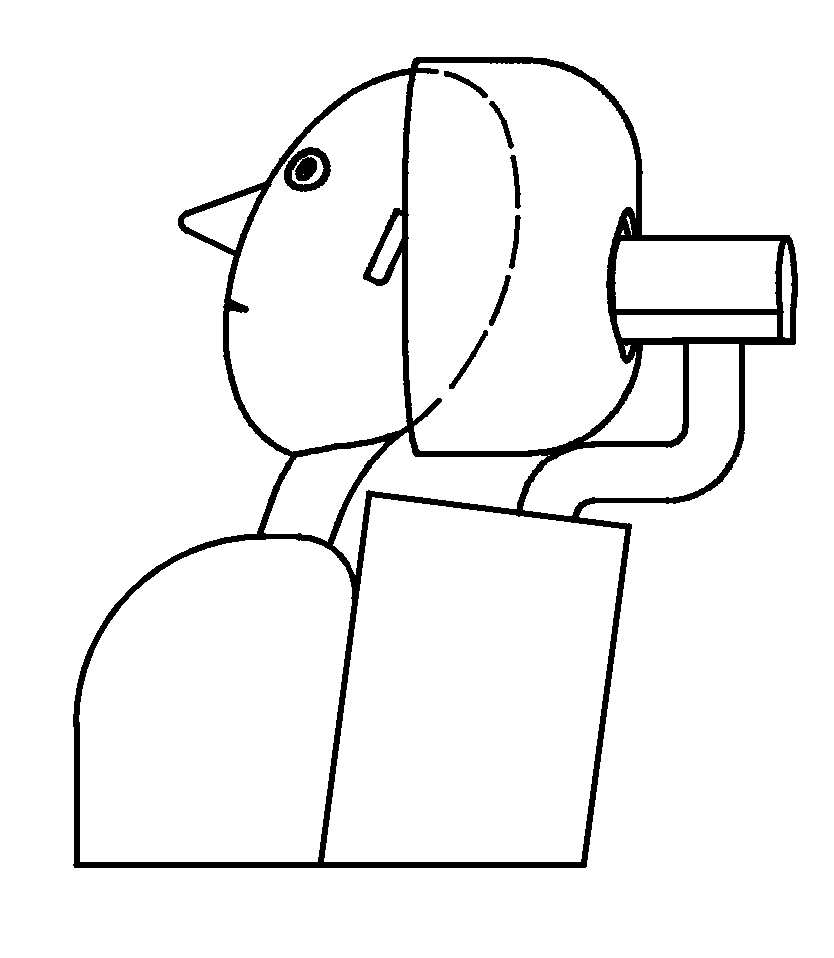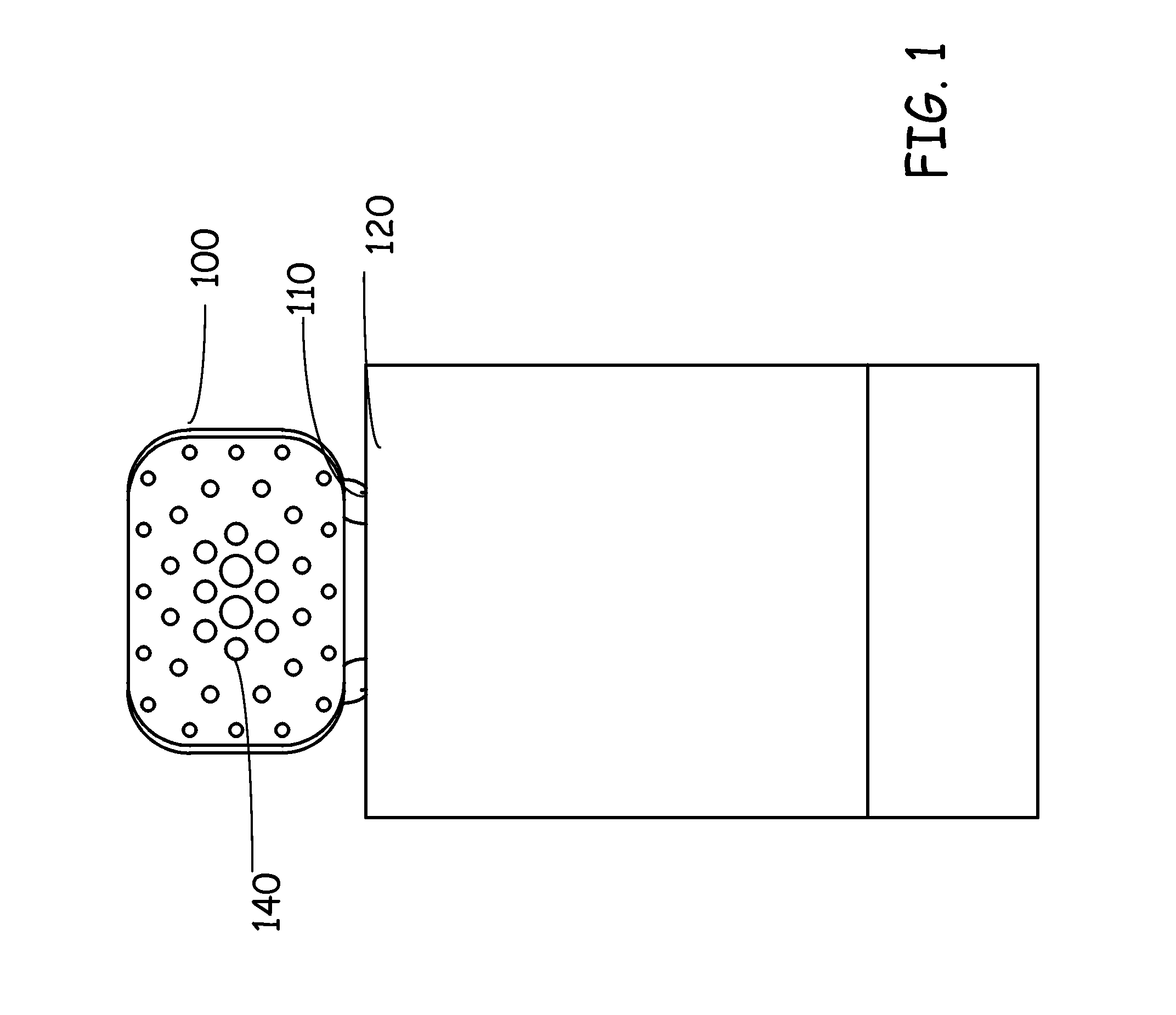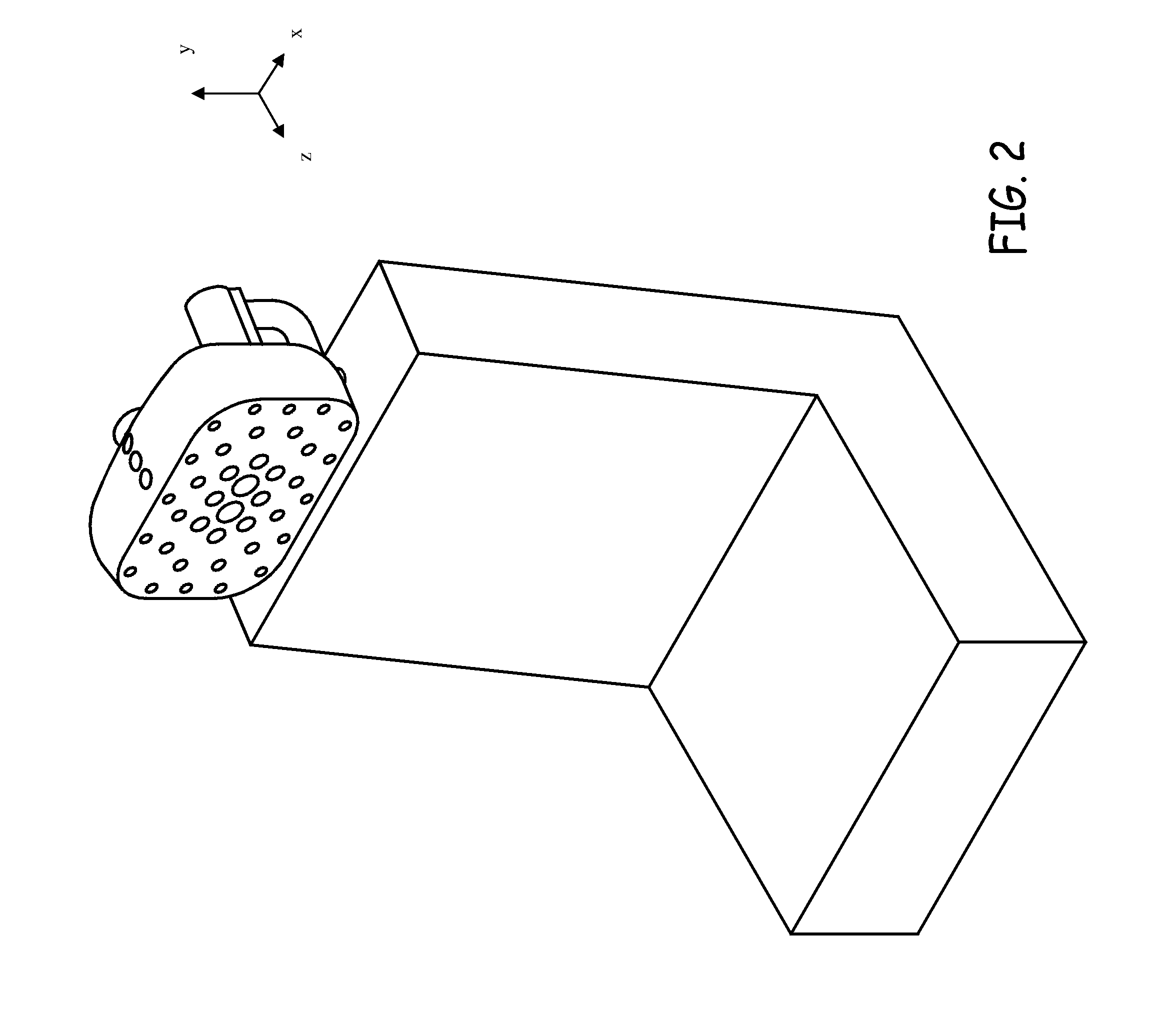Vehicle seat apparatus for collision injury prevention
a technology for vehicle seats and collision injuries, applied in the field of seats, can solve the problems of disc herniation, nerve root damage, soft tissue fiber tear, shearing and inflammation of the supporting structure of the spine, etc., and achieve the effects of increasing the ability of airbags, reducing the risk of injury, and increasing density
- Summary
- Abstract
- Description
- Claims
- Application Information
AI Technical Summary
Benefits of technology
Problems solved by technology
Method used
Image
Examples
second embodiment
[0053]FIGS. 6-10 illustrate the headrest comprising a pattern of holes of uniform diameter and density from the center to the outer periphery on the front surface of the headrest. The holes may further extend through the thickness of the headrest from the front surface to the back surface, and the channels created by the holes may be of uniform diameter to create cylindrical channels, or they can be of decreasing diameter through the headrest to create conical channels that radiate outward from the center of the headrest. As in the previous embodiment, the channels may go entirely through the headrest or almost through.
[0054]FIG. 6 is an overhead front perspective view of the headrest with the holes 140 of uniform diameter along the face of the headrest, and multiple rows of vertical channels 150 along the center of the headrest. FIG. 7 is a front view of the same headrest with a line “8” on the x-axis to represent the overhead cross-sectional view as shown in FIG. 8, and a line “10...
first embodiment
[0062]FIGS. 23-27, 28A and 28B illustrate a first embodiment where the shock absorption mechanism is positioned on the back of the headrest, and comprises an apparatus 110 with four points of connection (i.e. two to the headrest 100 and two to the top of the seatback 120) utilizing two identical or mirrored members (112, 114). The shock absorber means allows for backward movement of the headrest along the horizontal plane (x, z axis) to absorb impact forces (−z direction—backward) while diminishing opposing rebound forces (+z direction—forward) in order to slow the speed and the distance of the occupant's head / neck backward then forward movement (i.e. recoil).
[0063]The disclosure's headrest / seatback connection in some embodiments may be angled at greater than 90 degrees in the horizontal plane into the headrest. (This angling can be used in any embodiment of the disclosure, including those described below.) This horizontal plane angling accomplishes two things. First, in the C-shape...
third embodiment
[0070]As illustrated in FIGS. 36A and 36B, the third embodiment comprises the apparatus 500 sitting between lower surface of the headrest and the top surface of the seatback, and attaching to the seatback via one to four vertical members (e.g. rods) 510, comprising two rods aligned in the y, z-axis on the right and left side of the apparatus. The headrest is directly attached to the lever 520 which has an internal torus 530 encasing the spring 540 (e.g. compression or torsional helical spring) and an external torus 550 encased by the spring. Internal torus 530 is attached to apparatus 500. Lever 520 can rotate around axis 525. Axis is attached to apparatus 500. This disclosure absorbs impact on both the horizontal and vertical planes. In alternate embodiments, air or oil-based shock absorbing mechanism can be used in a similar manner.
Vertical Headrest / Seatback Shock Absorber Apparatus
PUM
 Login to View More
Login to View More Abstract
Description
Claims
Application Information
 Login to View More
Login to View More - R&D
- Intellectual Property
- Life Sciences
- Materials
- Tech Scout
- Unparalleled Data Quality
- Higher Quality Content
- 60% Fewer Hallucinations
Browse by: Latest US Patents, China's latest patents, Technical Efficacy Thesaurus, Application Domain, Technology Topic, Popular Technical Reports.
© 2025 PatSnap. All rights reserved.Legal|Privacy policy|Modern Slavery Act Transparency Statement|Sitemap|About US| Contact US: help@patsnap.com



